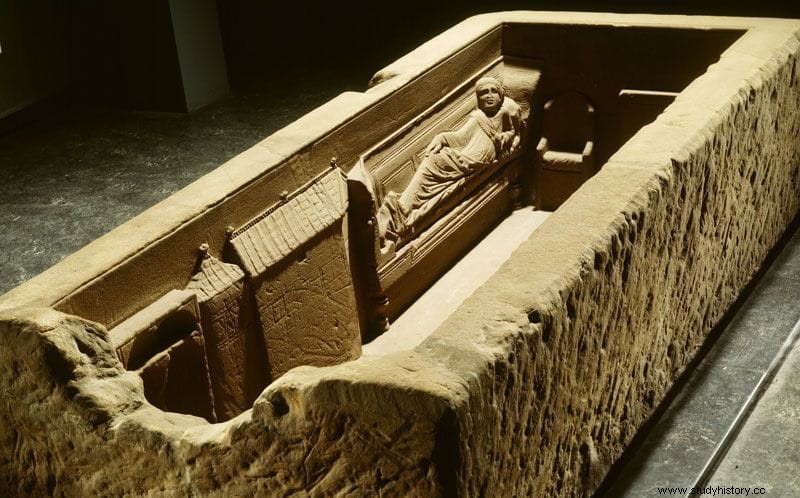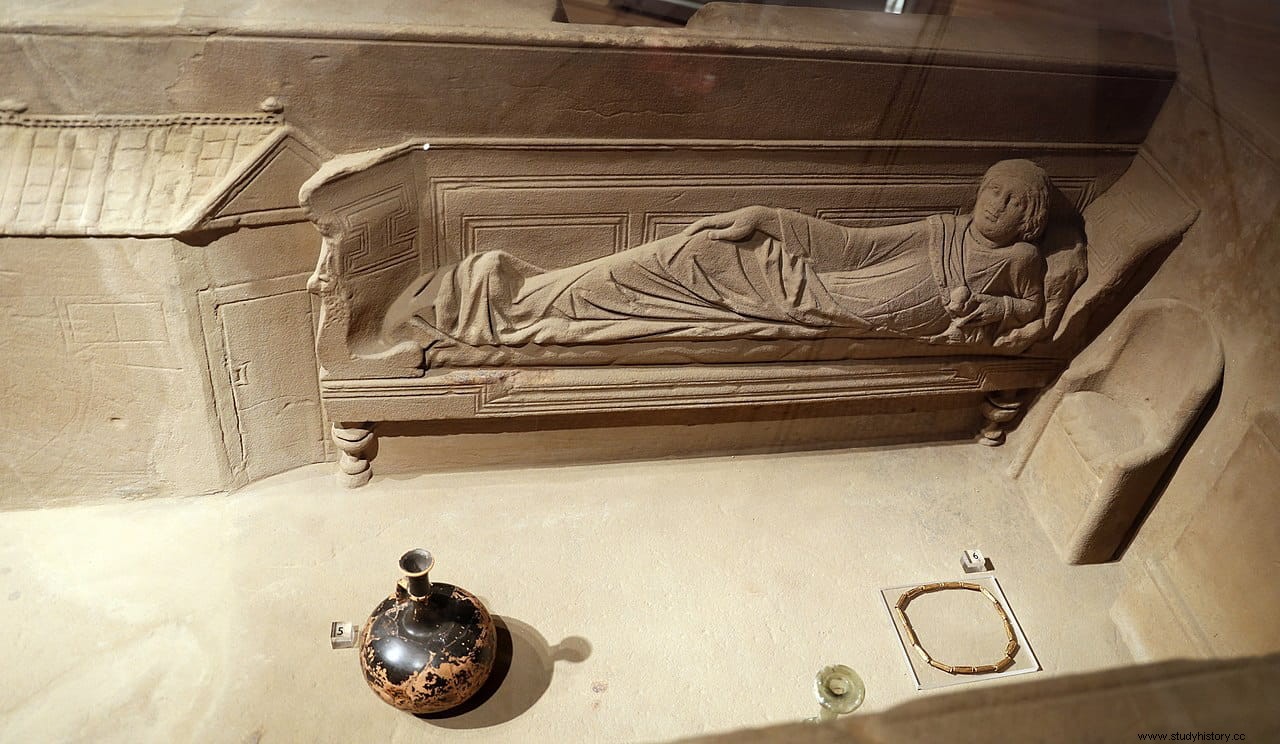While carrying out excavation work on his property on Stampstraat in the village of Simpelveld in the Netherlands, Andreas J. Wierts found three sandstone sarcophagi on December 11, 1930. Two of them had been looted, but the third was intact, although the lid was broken.
Looking inside, archaeologist Jan Hendrik Holwerda, who was notified of the find, was in for a surprise. Everything was decorated with a detailed high-relief, which makes it unique among the Roman sarcophagi found so far.

Many Roman sarcophagi with decoration on the outside are known, but one with interior carvings has never been seen. He immediately applied to the Rembrandt Foundation for financial support in order to acquire it, which he did for the Rijksmuseum van Oudheden in Leiden, where it is currently on display.
It is dated to the 3rd century AD. and despite its size (measuring 2.40 by 1.05 meters), it did not contain the body of the deceased, but only his ashes. Its owner, a woman whose name is unknown (and who has been baptized as the Lady of Simpelveld ), was cremated according to the Roman rite of the time and her ashes deposited inside, where they were still when it was opened. So technically it's not a sarcophagus, but an askist , urn or ashes box. It was called a sarcophagus due to its unusual size, and it is the name by which it is known today.

Inside were also found a silver hand mirror, a black glass jar, a ceramic jar and jewelry, including a necklace, an earring, and three rings, all gold. In addition, two of the rings have precious stones, and one of them has an inscription. But, as we said, the most interesting thing is all the high relief that runs along the interior walls of the sarcophagus.
It represents a room decorated with furniture and everyday objects, with the image of the deceased resting on a prie-dieu. In the room there is a wicker chair, a wardrobe, a chest for clothes, a table decorated with lion heads and claws, shelves with bottles and rectangular containers, as well as toiletries.

Since no furniture from the Roman era has survived (because it is made of wood, a perishable material), this relief gives us an idea of what it could have been like.
At the foot of the kneeler is a replica of a horreum (warehouse or barn), which would indicate that the deceased came from a rural and agricultural background. In fact, seven years later, in 1937, the remains of a Roman villa were discovered just 150 meters from the place where the sarcophagus appeared.

The examination of the woman's remains in 2016 determined that she must have been between 35 and 49 years old at the time of her death, and that she had never done heavy physical work, so she must have led a luxurious or at least comfortable life.
In September 2020, the museum began restoration work on the sarcophagus, which visitors can follow live in the museum itself until August 2021.
